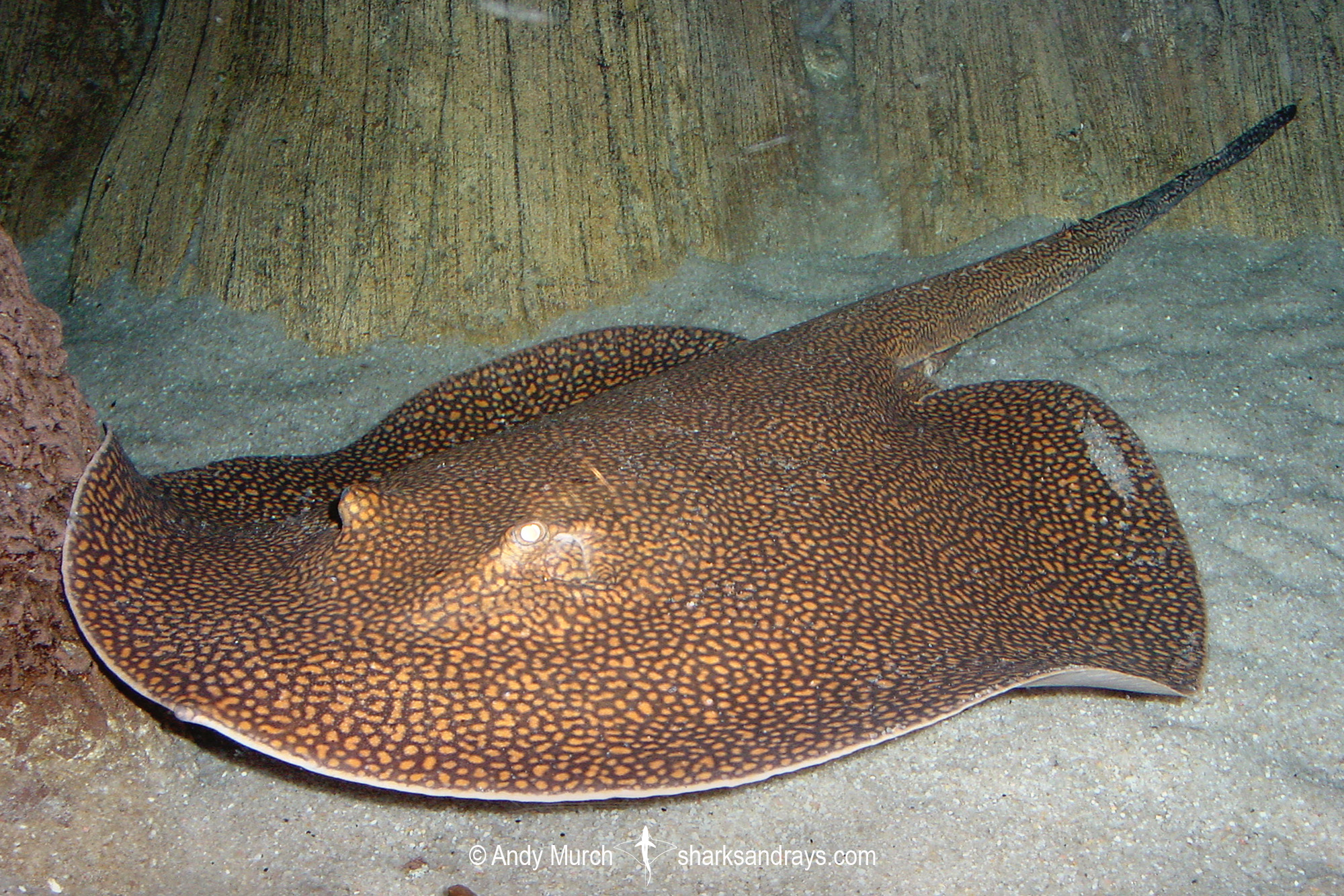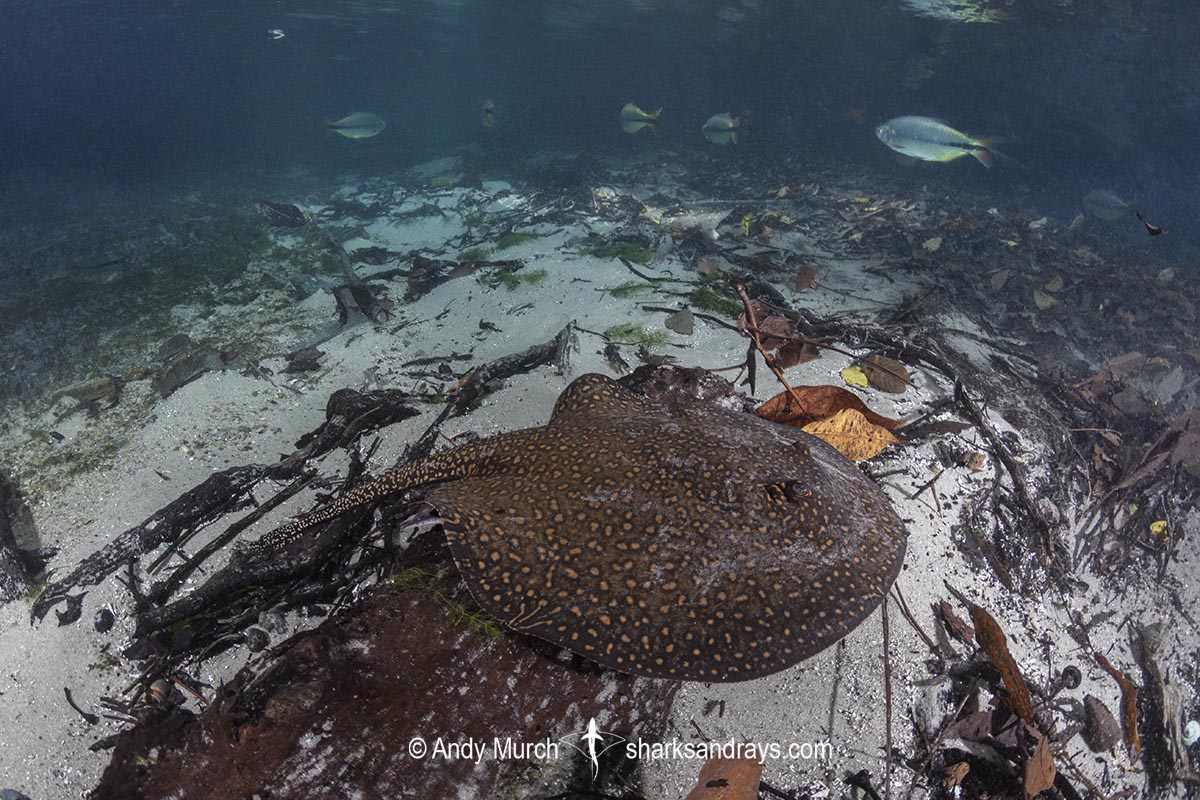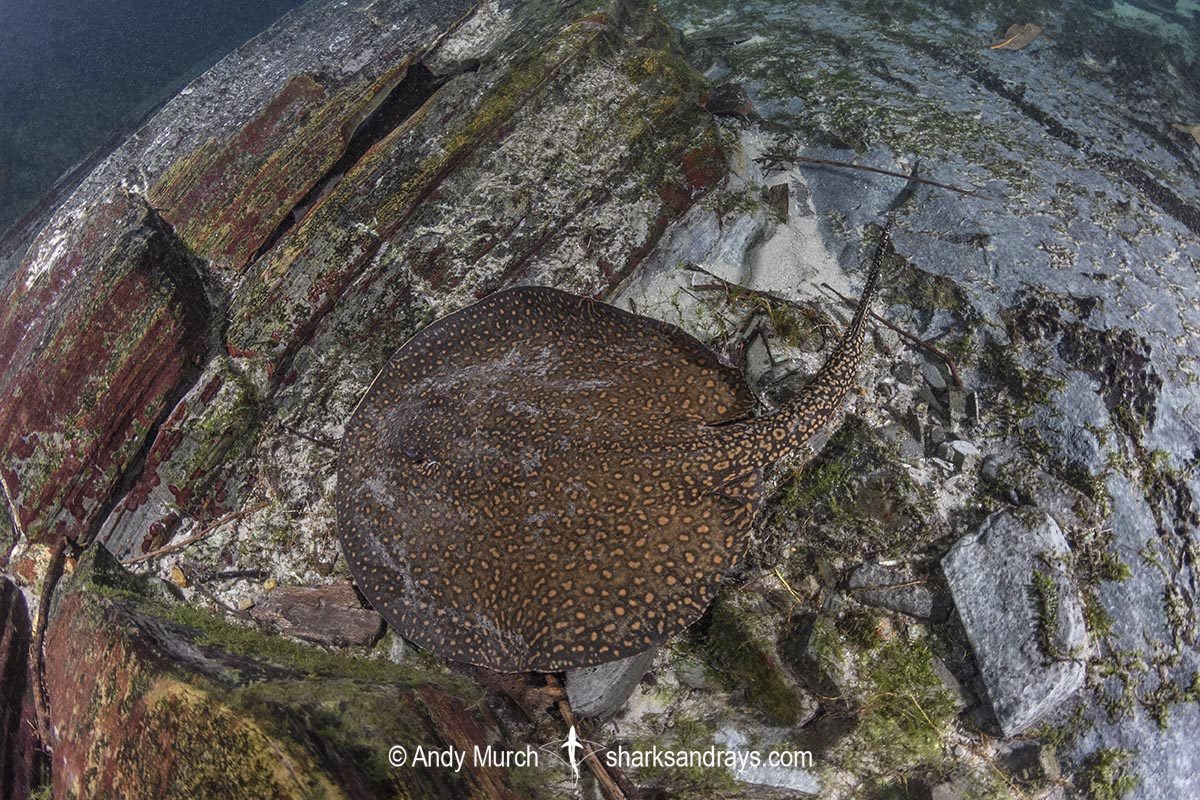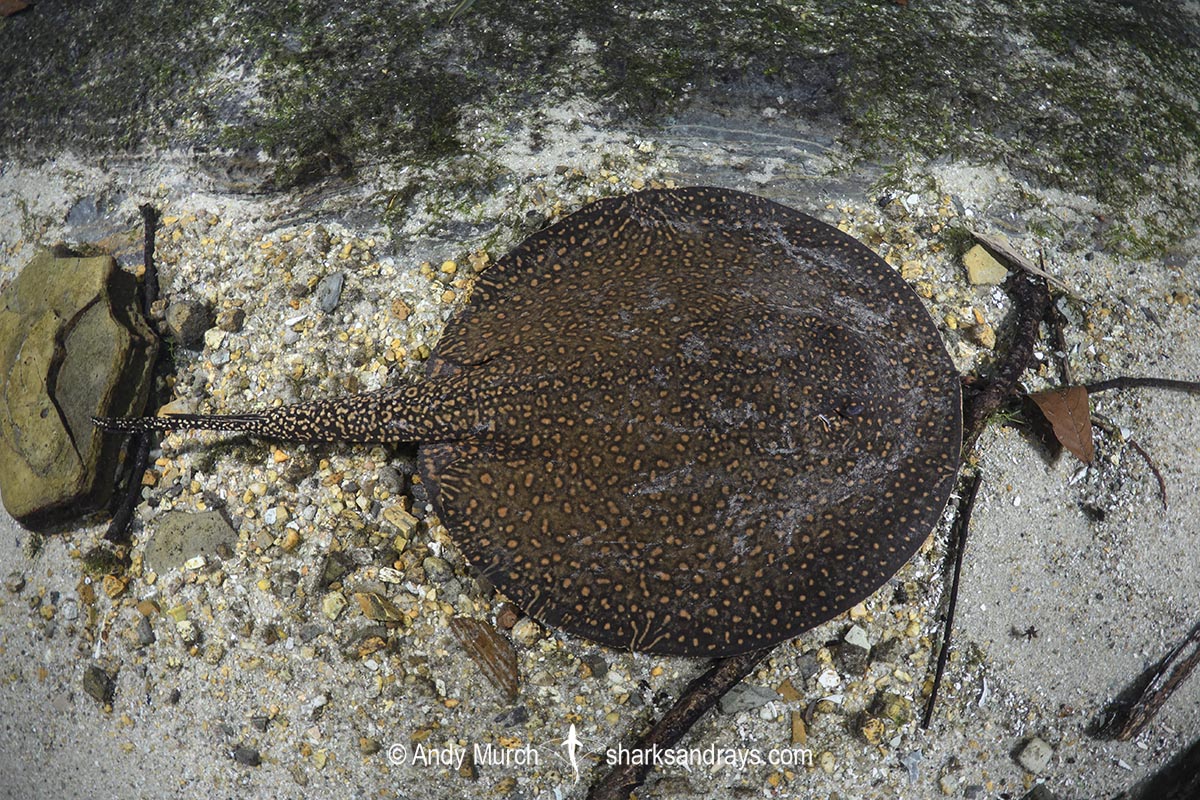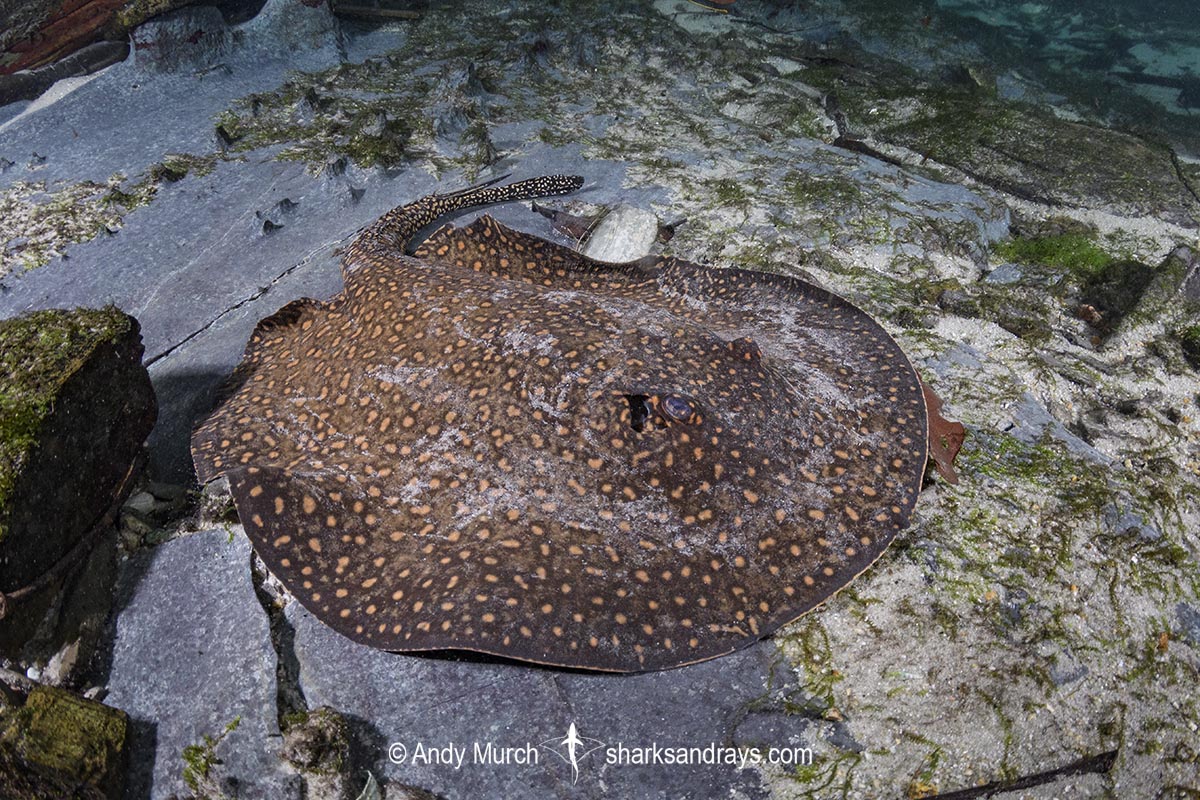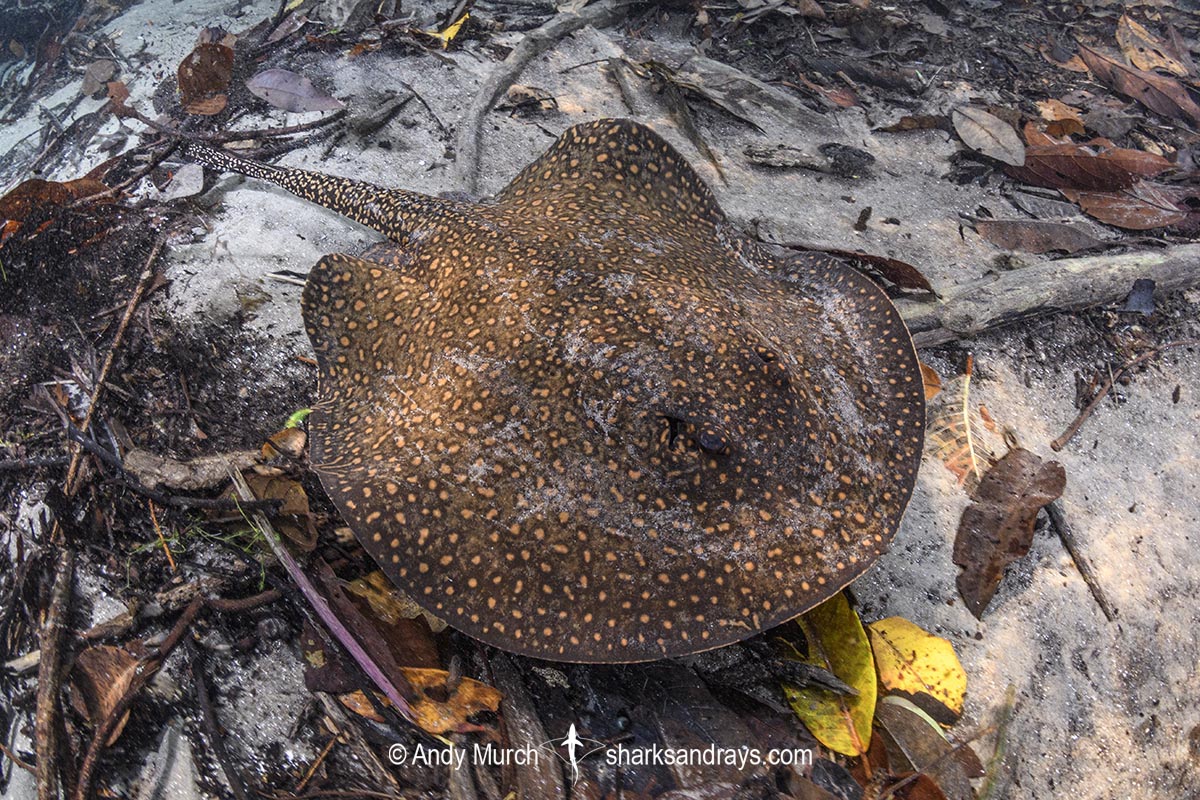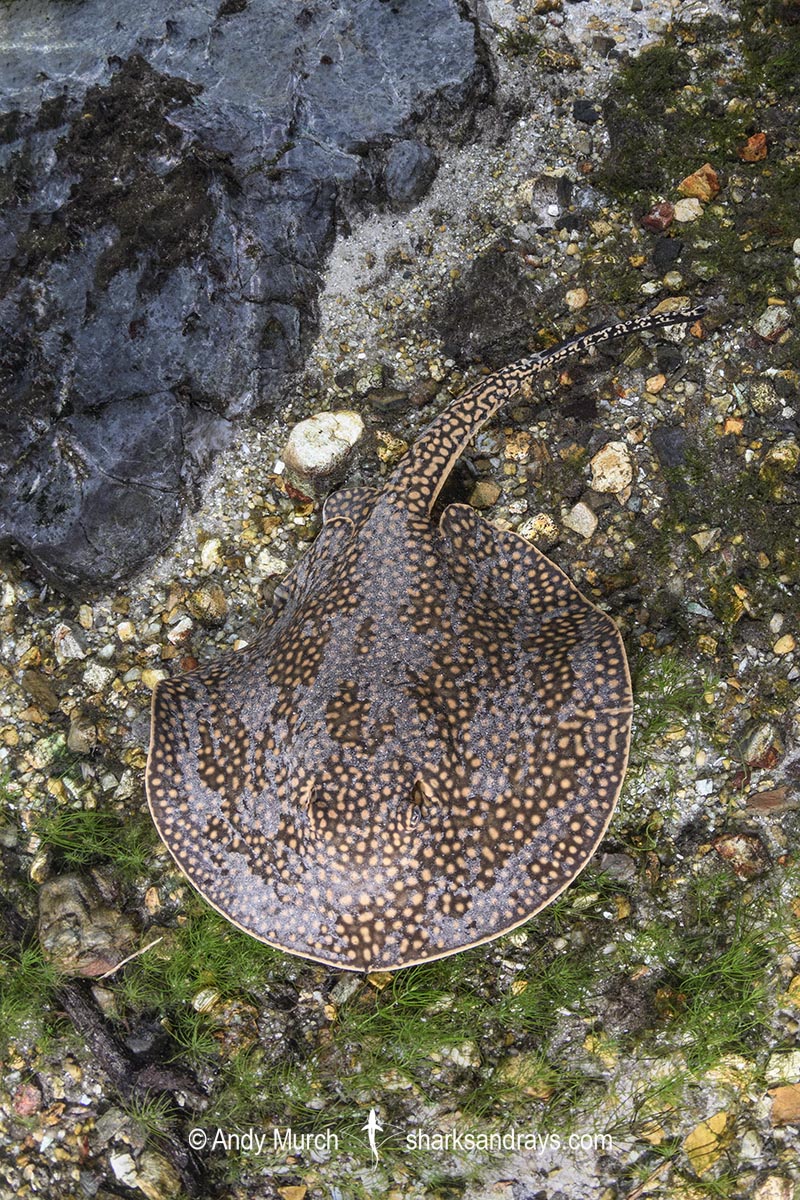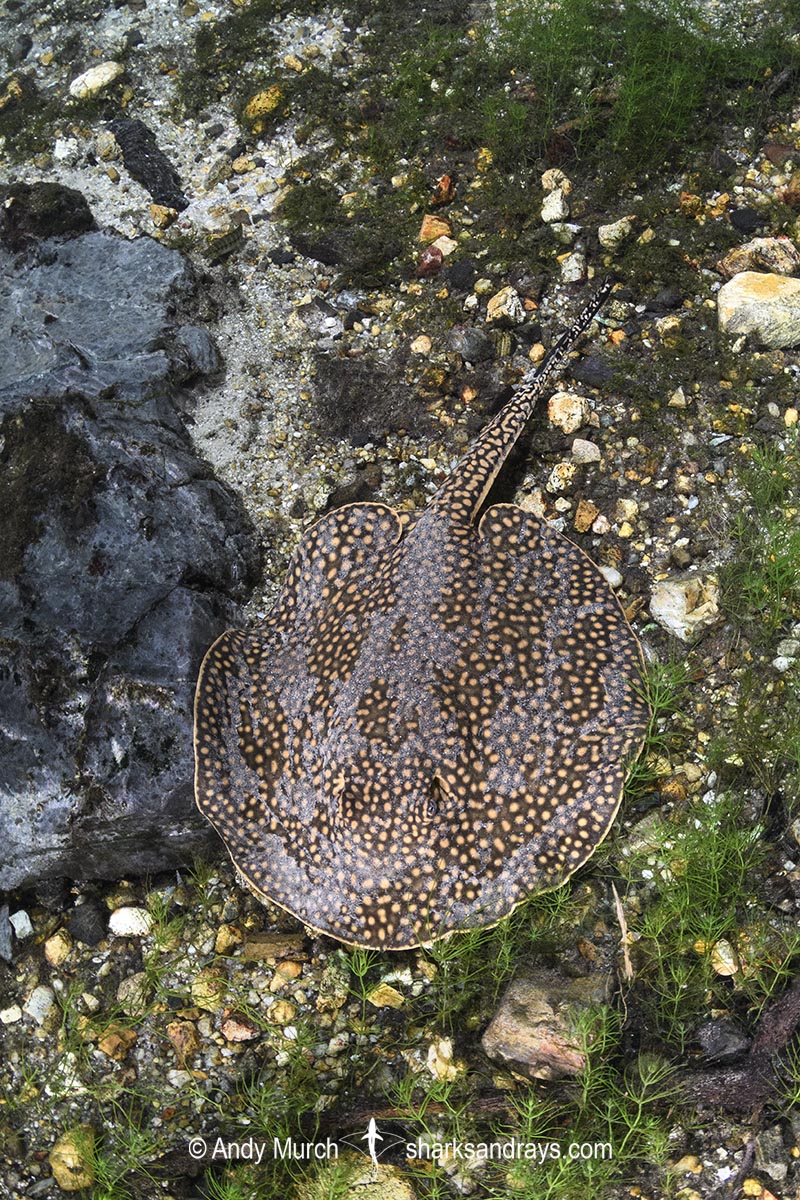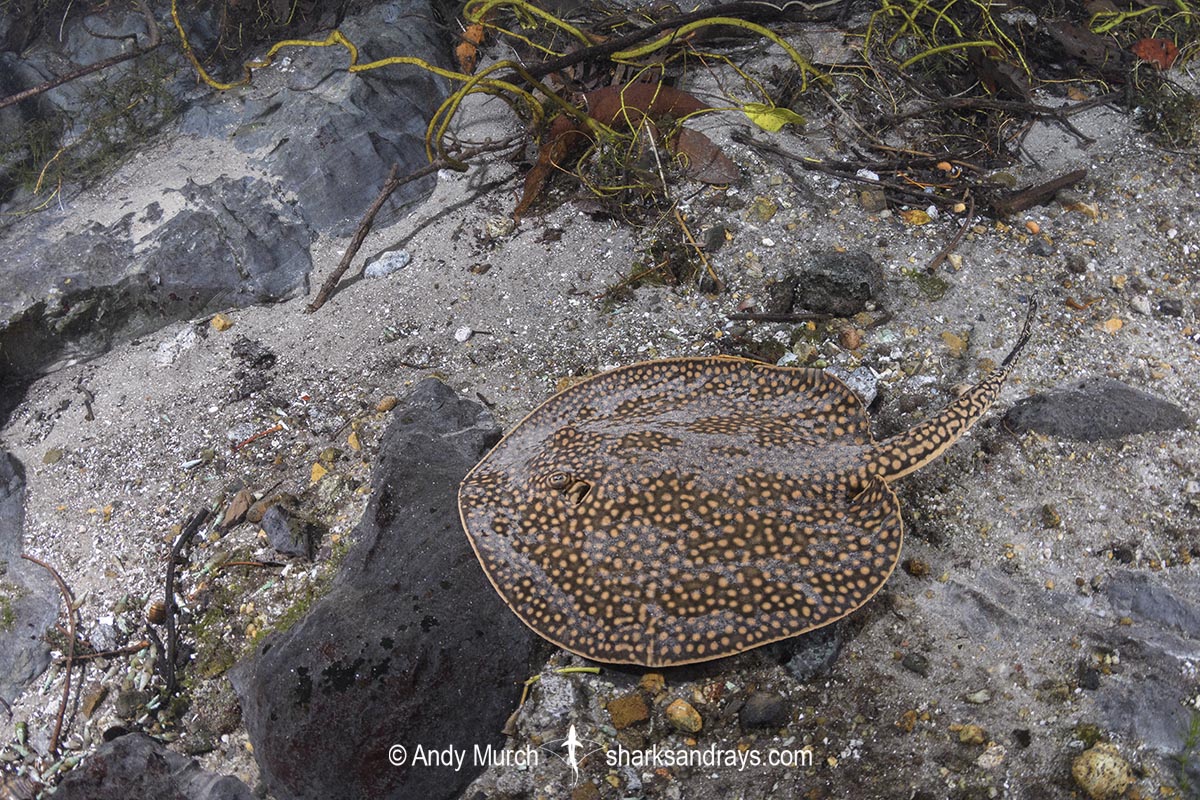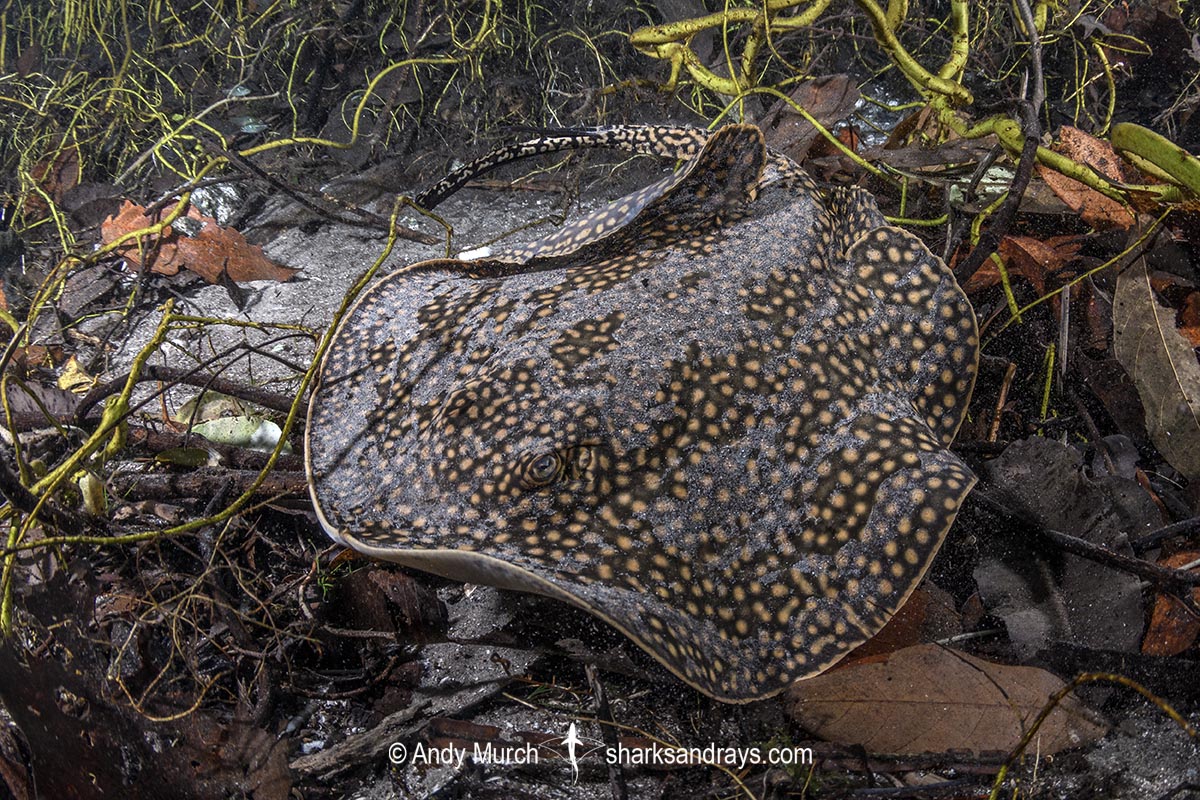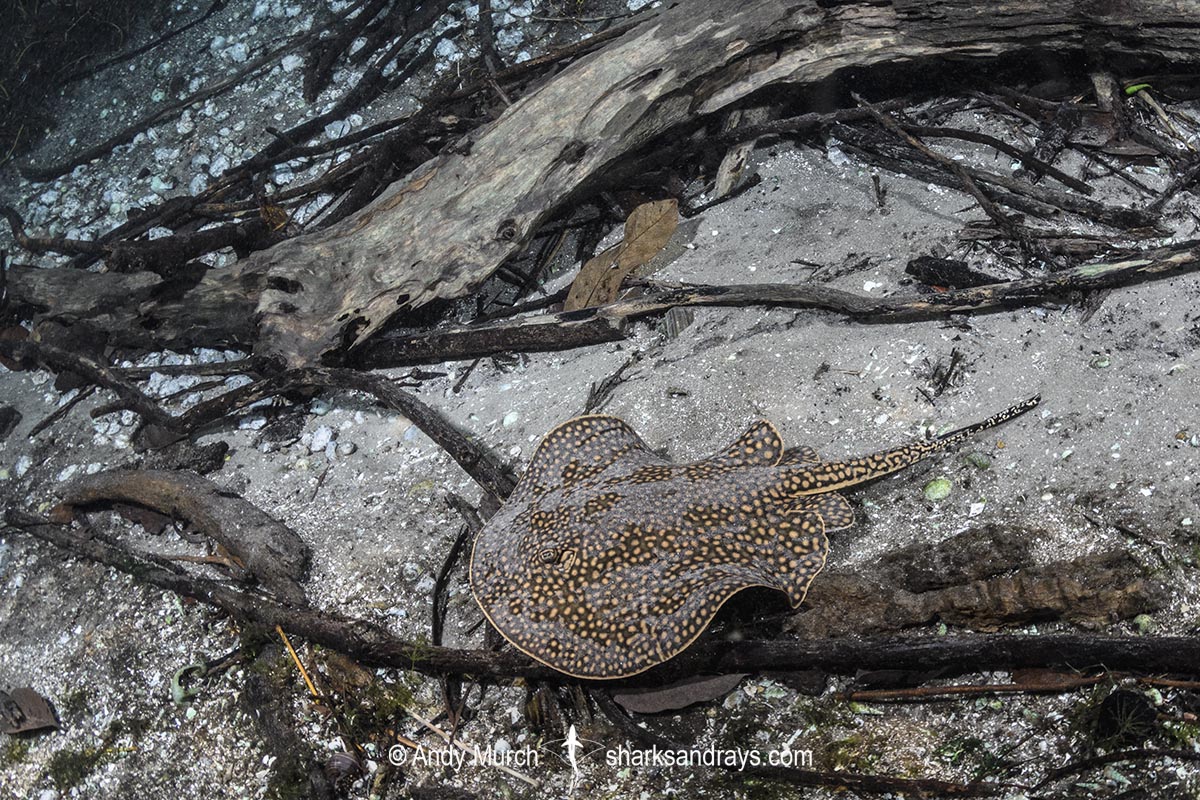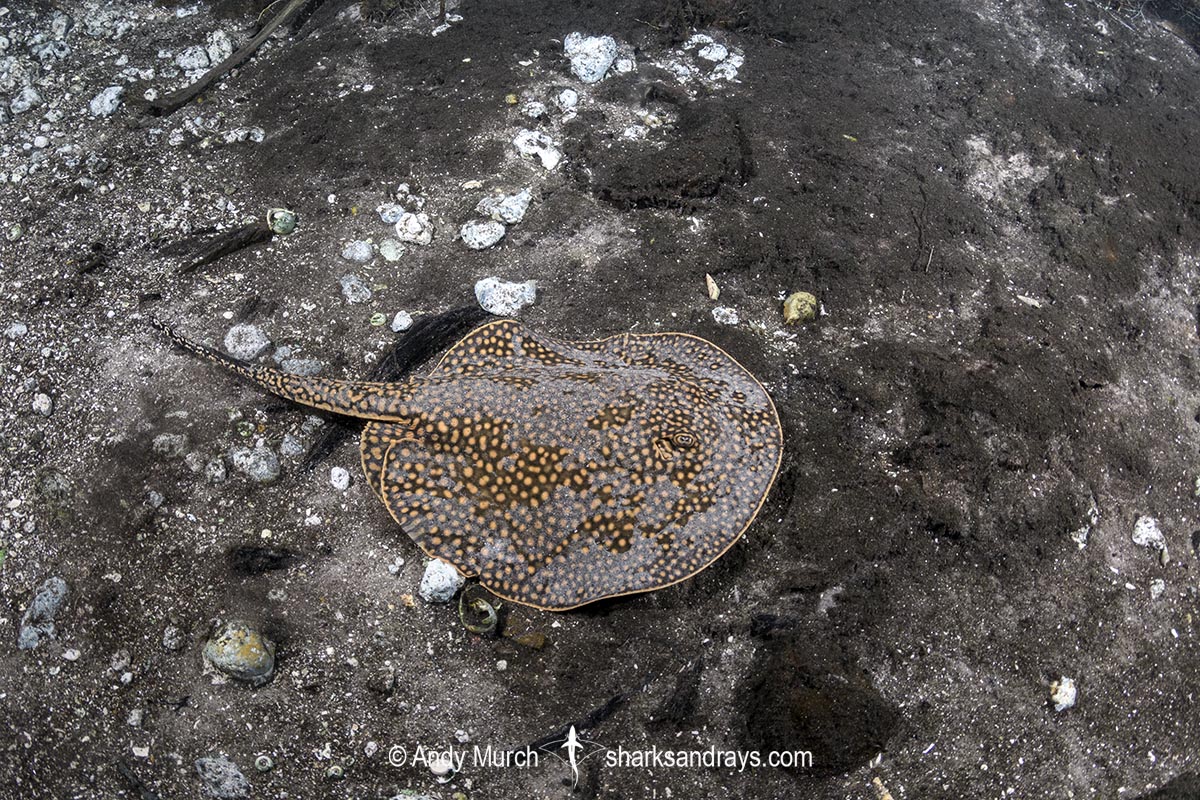Common names
Paraná Freshwater Stingray, Reticulated Freshwater Stingray, Largespot River Stingray.
Binomial
Potamotrygon falkneri.
Synonyms
Potamotrygon castexi, Potamotrygon menchacai.
Identification
A medium-sized freshwater stingray with a thin oval disc that is slightly longer than wide. Very small lobe visible on tip of snout. Head relatively flat and broad. Eyes small. Spiracle length approximately 2x eye length. Nostrils thin. Nasal curtain fringed. Mouth small with 5 oral papillae.
Disc sparsely covered in denticles; more densely grouped towards centre of disc. Pelvic fin posterior margins slightly posterior to (or level with) disc. Tail relatively narrow, shorter than disc width, with small dorsal/ventral finfolds. 1-3 irregular rows of small thorns dorsally on tail. Caudal stings positioned distally at end of tail.
Colour
Dorsum dark brown, reddish brown, or olive brown with a dense covering of light brown or orange spots that sometimes form a vermiculate pattern or irregular circles. Ventrum mostly white with grey spots towards margin or grey with a small white anterior region. Tail dark posteriorly.
Size
Maximum disc width 52cm. Disc width at birth approximately 14cm.
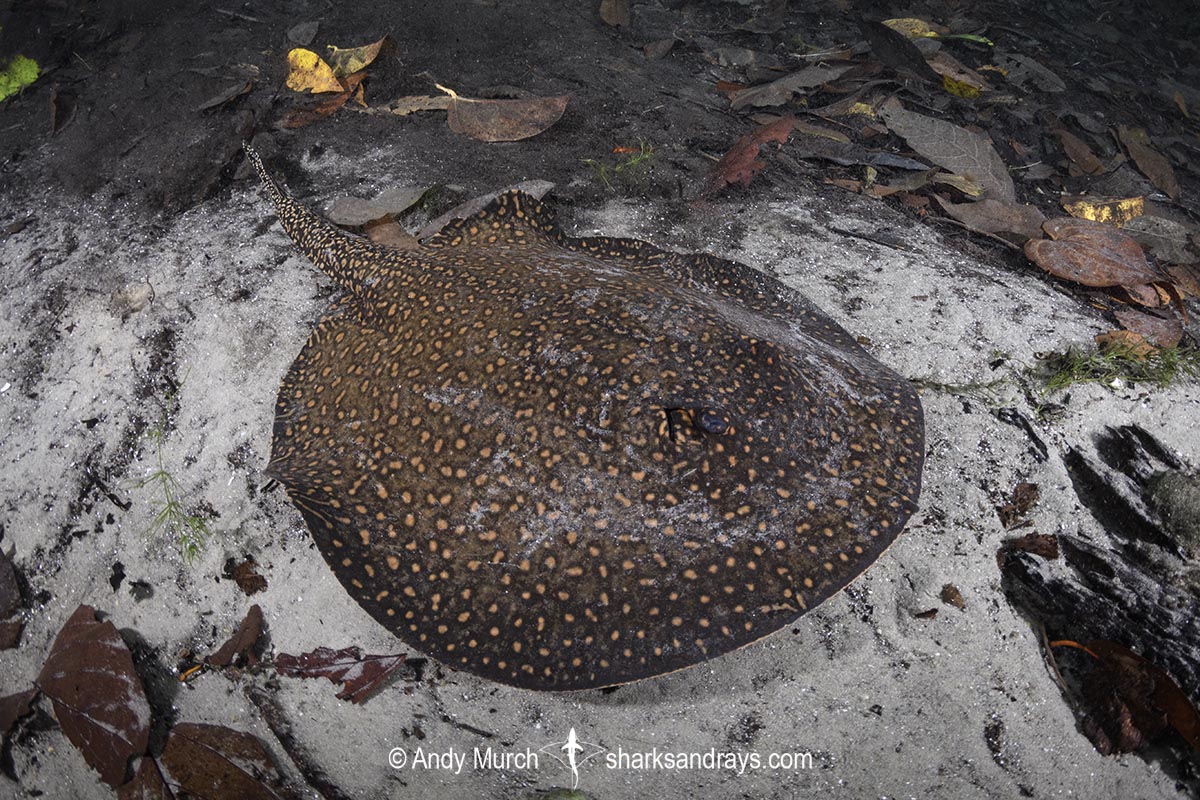
Conservation Status
DATA DEFICIENT
The Reticulated Freshwater Stingray (Potamotrygon falkneri) is confined to the Paraná River basin. Although not enough information is available to assess this species, all potamotrygonids are facing habitat degradation, fishing pressure, and collection for the aquarium trade.
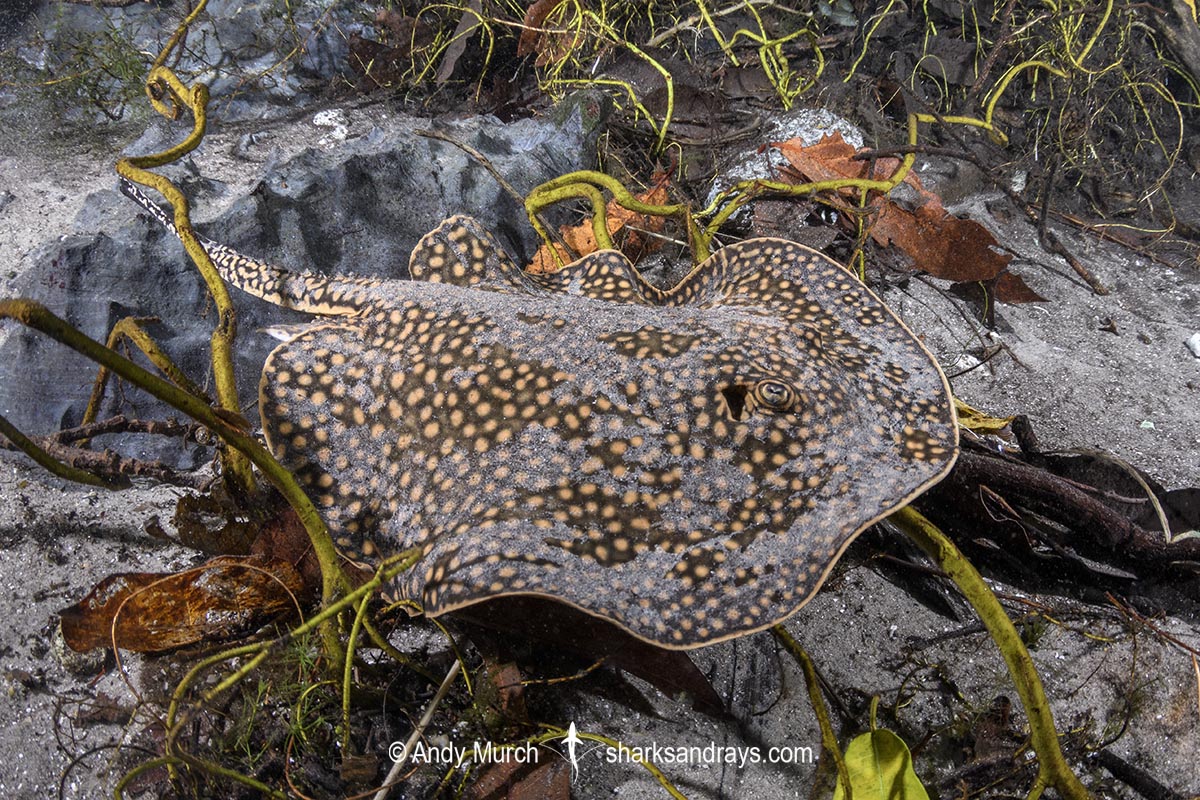
Habitat
Tropical freshwater lakes and river systems.
Distribution
South America. The Paraná freshwater stingray is found in Northeastern Argentina, Paraguay (in Alto Paraná at Puerto San Jorge), Southern Brazil (in the Rio Cuiabá, Rio Paraguay, and in Rio Paraná from Guaíra to Entre Rios), and in the mouth of the Uruguay River.
Reproduction
Viviparous with trophodermic nutrition. 3 pups per litter reported.
Diet
Diet consists of insects, molluscs, crustaceans, and small fishes.
Behavior
Poorly known. Probably moves into seasonally flooded areas during periods of high water.
Reaction to divers
Fairly easy to approach with non-threatening movements. Will move away but easily followed.
Diving logistics
The best place to photograph Parana freshwater stingrays is in the Rio Triste near Bom Jardim; 2hrs drive northeast of Cuiaba. Snorkeling tours in the river are organized by a local operator. The river is crystal clear in the area, allowing for excellent views and images. During a one hour snorkel in September, I found three Parana freshwater rays. Our guide said that less frequently, they also see another species with larger spots; probably P. motoro.
A second spot with clear enough water to photograph this ray is the Rio Formosa. They are not seen around Bonito (where organized snorkeling tours are available) but they can be found 2hrs drive east.
What’s new
View our full list of updates
Similar species
Tatiana’s Freshwater Stingray Similarly patterned but distinguishable by longer tail and generally darker appearance.


